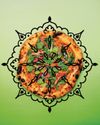A PIECE OF HER MIND

For Émilie du Châtelet, romance and research could be twinned enterprises.
Historians championing previously marginalized intellectual and literary figures are often caught on the horns of an odd dilemma. On the one hand, the subject—the woman scientist, the Black composer, the Indigenous military strategist—must have met with some degree of social acceptance in their day or the work would never have had enough support and attention to have flourished and survived. Since historians wish to draw on the wiser judges of the era to establish the importance of their subjects, we are told about whom they wowed and how they wowed them. On the other hand, the point must be made that such subjects have had far less attention than they deserve. So they must be shown to have been keenly appreciated by the better spirits of their time as well as wrongly consigned to oblivion.
This reflects a historical truth— the marginalized often are esteemed, at least by some, before being neglected by all—but it creates a strange biographer’s two-step. We regret that Louise Farrenc, the French Romantic composer, has fallen into obscurity, while reporting how much her contemporary Hector Berlioz admired her in order to establish the injustice of her obscurity. Isaac Rosenberg might be “the greatest English war poet nobody ’s ever heard of ”—as one of his champions insists, comparing him favorably with Rupert Brooke and Wilfred Owen, and ascribing his oblivion to his being working class and Jewish—but his work’s excellence is established by the fact that Ezra Pound and T. S. Eliot were impressed by it. Vindicated and victimized: this two step is very much on view in “The Enlightenment ’s Most Dangerous Woman: Émilie du Châtelet and the Making of Modern Philosophy” (Oxford), Andrew Janiak’s engrossing life of the French scientist, mathematician, and philosopher.
This story is from the {{IssueName}} edition of {{MagazineName}}.
Start your 7-day Magzter GOLD free trial to access thousands of curated premium stories, and 9,000+ magazines and newspapers.
Already a subscriber ? Sign In
This story is from the {{IssueName}} edition of {{MagazineName}}.
Start your 7-day Magzter GOLD free trial to access thousands of curated premium stories, and 9,000+ magazines and newspapers.
Already a subscriber? Sign In

Hatagaya Lore Bryan Washington
We moved to Tokyo from Dallas because of my husband's job, an unexplainable tech gig.

A MATTER OF FACTS
On the loss of two sons.

OPEN SECRET
Why did police let one of America's most prolific predators get away for so long?

BEYOND THE CURVE
In medicine and public health, we cling to universal benchmarks—at a cost.

Richard Brody on Pauline Kael's "Notes on Heart and Mind"
When Pauline Kael joined The New Yorker’s staff as a movie critic, in January, 1968, the world of cinema was undergoing drastic change.

CHORAL HISTORY
“The Alto Knights.”

THE ELEMENTS OF STYLE, 2025
Reliable news coverage has never been more important than it is now. Journalists must remain vigilant and rigorous in the face of a second Trump Administration. To help them do so, we are releasing an updated version of Strunk and White’s “Elements of Style.” Please refer to the following examples when writing and reporting, for as long as that’s still allowed.

CHARACTER STUDIES
“Purpose” on Broadway and “Vanya” downtown.

DO YOU KNOW JESUS?
Why the Gospel stories won’t stay dead and buried.

HOME SLICE
The making of an Indian American specialty.
